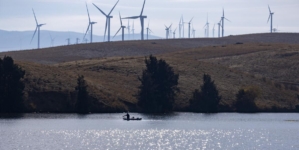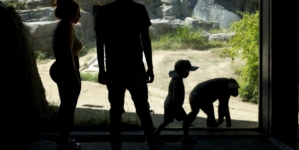-
Common Belief About Left-Handed People Debunked by Psychologists - 14 mins ago
-
Tesla stock price sinks as Musk and Trump feud over spending bill - 24 mins ago
-
2025 Gold Cup Odds: Mexico Slightly Favored Over U.S. Ahead Of Semifinals - 31 mins ago
-
Court in Thailand suspends prime minister over leaked phone call with Cambodian official - 37 mins ago
-
Woman Wonders Why Senior Dog Lies in One Spot—Then Has Tearful Realization - 53 mins ago
-
From Pure Flavors to Bold Innovations - about 1 hour ago
-
Real Madrid vs. Juventus: Preview, odds, how to watch, time - about 1 hour ago
-
SparkKitty mobile malware targets Android and iPhone - about 1 hour ago
-
Jessica Pegula loses in first round upset at Wimbledon - about 1 hour ago
-
Woman Sees Stray Cat in Yard, Husband Discovers Her Elaborate Safety Plan - 2 hours ago
Hardcore birders and casual sparrow spotters: Science needs you
Attention would-be warbler watchers and pigeon peepers: Ornithologists at UCLA and the Natural History Museum of Los Angeles County are recruiting volunteers for Project Phoenix, a multiyear citizen science initiative investigating birds’ response to wildfire.
The team is seeking volunteers in California, Oregon and Washington to collect data from July through November, the duration of the official West Coast fire season.
Volunteers need to choose a comfortable, familiar spot — a backyard, a balcony, a favorite local park — and spend 10 minutes there each week noting any bird activity they hear or see. They then enter their observations on the online platform eBird.
No bird knowledge or expertise is required, said program director Olivia Sanderfoot, a UCLA ornithologist. Beginners especially are welcome, in fact, as they’re more apt to notice common species and behaviors that longtime bird watchers might overlook.
“Whether you are an expert birder who has been birding your whole life or you have never thought about birds, you are welcome to join Project Phoenix,” Sanderfoot said. “We want this program to be accessible.”
This is the third consecutive year of the study, which began in 2023 with about 300 volunteers tracking bird behavior over a three-month period.
The study aims to understand the effects of wildfire smoke on birds, an understudied component of the ever-expanding Western fire season. The more data volunteer observers gather, the better ornithologists can understand how fires affect these animals and what steps can be taken to help them.
Participants can commit to the whole season or just a few weeks. Researchers will cross-check volunteers’ notes against fire and smoke distribution data to look for patterns in animal behavior. For those who struggle to tell a bushtit from a barn owl, the team has assembled resources to help distinguish between common local species and can answer individual questions via email. Volunteers’ notes are also reviewed by a team of expert birders before being passed on to researchers, who will follow up with further questions about any highly unusual birds or behavior noted.
What may feel like casual observations to a backyard birder are actually valuable data points, Sanderfoot said.
From the first two years of project data, scientists have already noticed that the presence of soot particles — a major component of wildfire smoke — changes the probability that certain bird species will be observed in a given area, Sanderfoot said. The reason why isn’t yet clear.
Are scrub jays showing up in parks where they typically aren’t spotted? They may be relocating to avoid sooty skies. Is the action at a backyard feeder getting surprisingly heated? It’s possible that birds aggravated by smoke are becoming more territorial. Scientists want to know if birds are actually flying to new locations when air quality declines, or if they are changing their behaviors in ways that make them harder or easier for human bird-watchers to spot.
“These are the hypotheses we are hoping to test with the data we collect in 2025,” Sanderfoot said. “The more people we have engaged, the more likely that we will have people in place to capture these impacts where they occur. It requires people power.”
Signups are at www.projectphoenix.study.
The bird-watching is also fun, volunteers said.
“I’ve enjoyed being able to slow down and just stop to observe for 10 minutes,” said Carrie Brown-Kornarens, a Los Feliz ceramicist and wildlife enthusiast who has volunteered for Project Phoenix since the study’s launch. “Staying in one spot brings the birds to you, and it’s a peaceful experience.”
Source link































